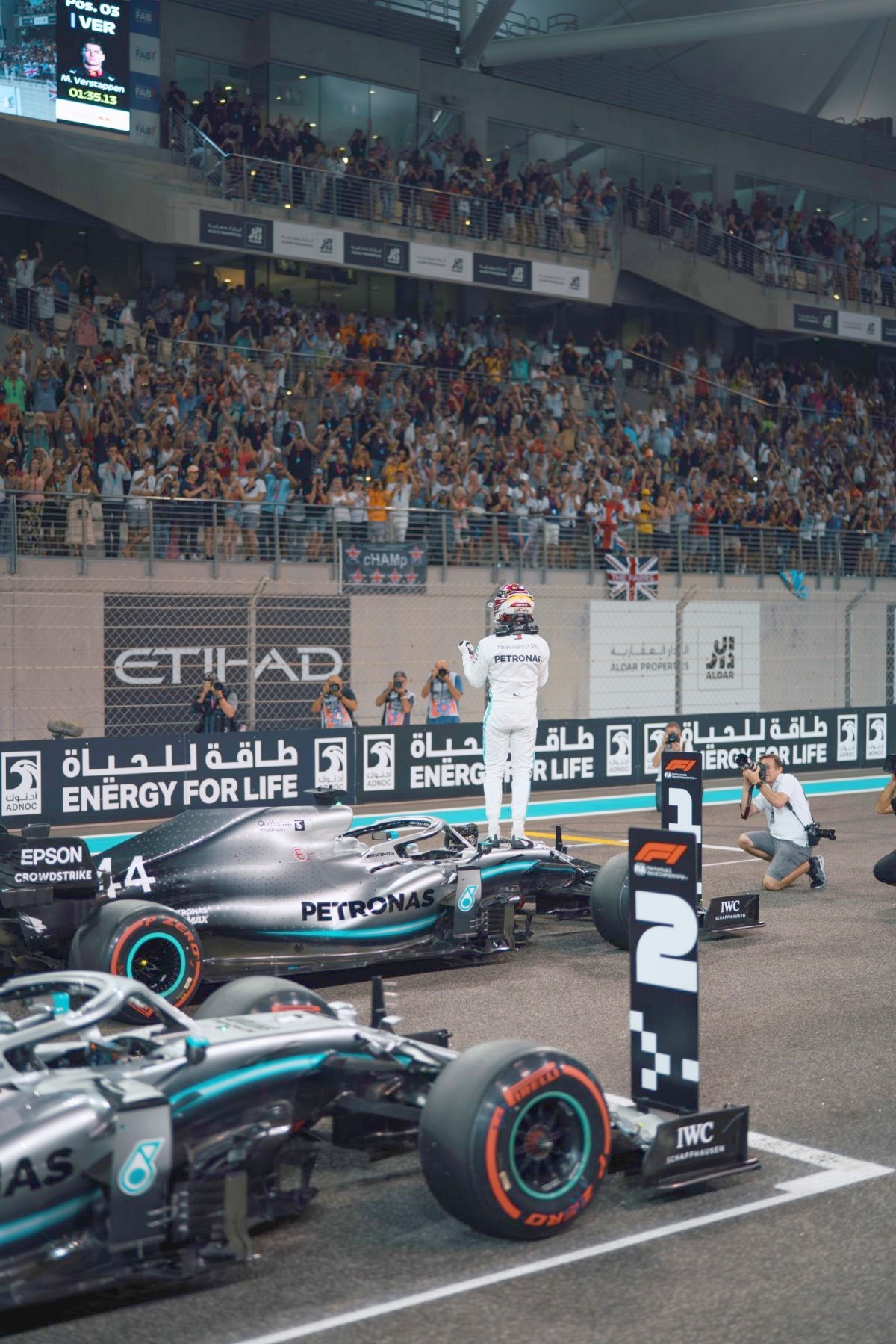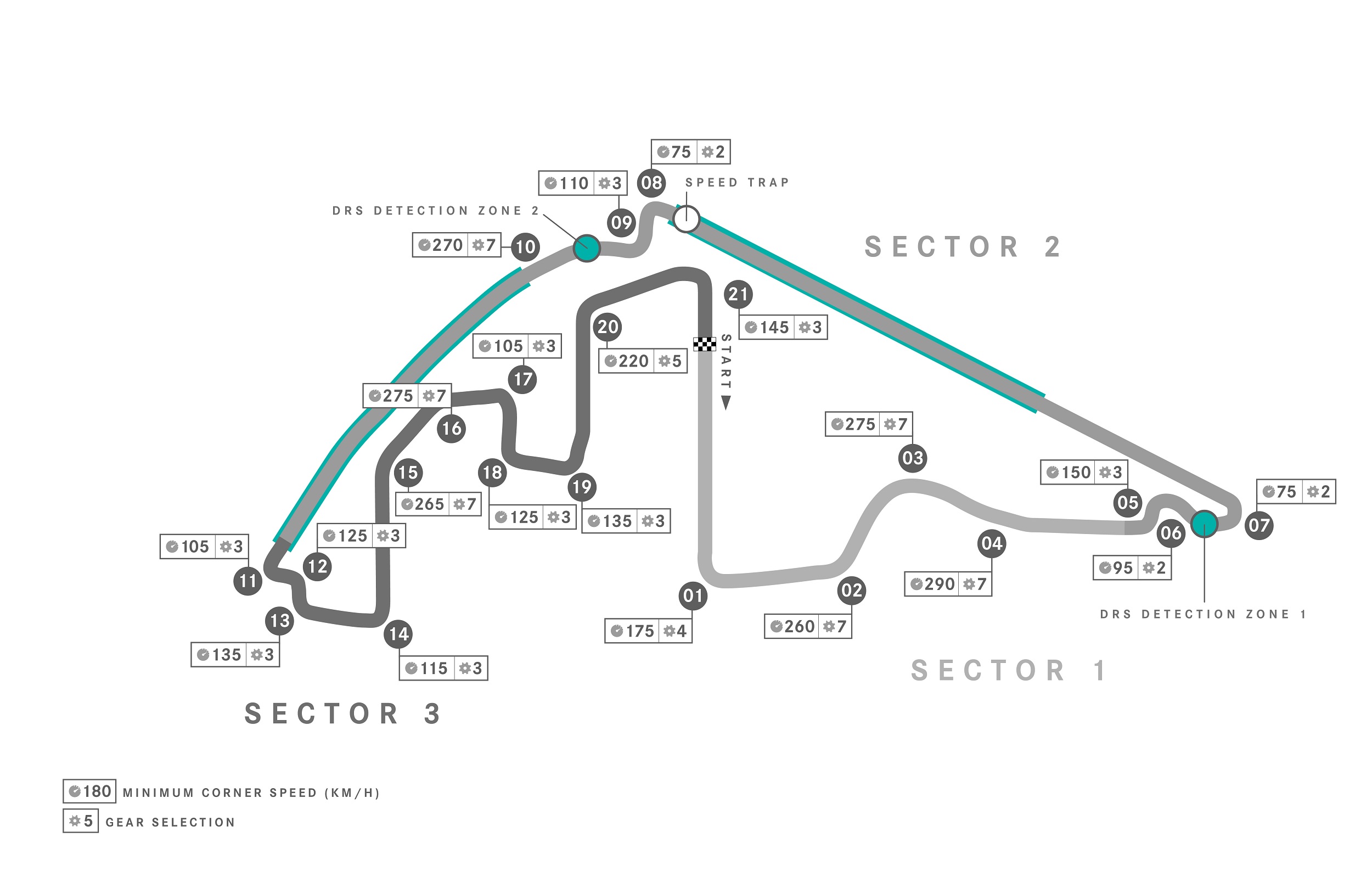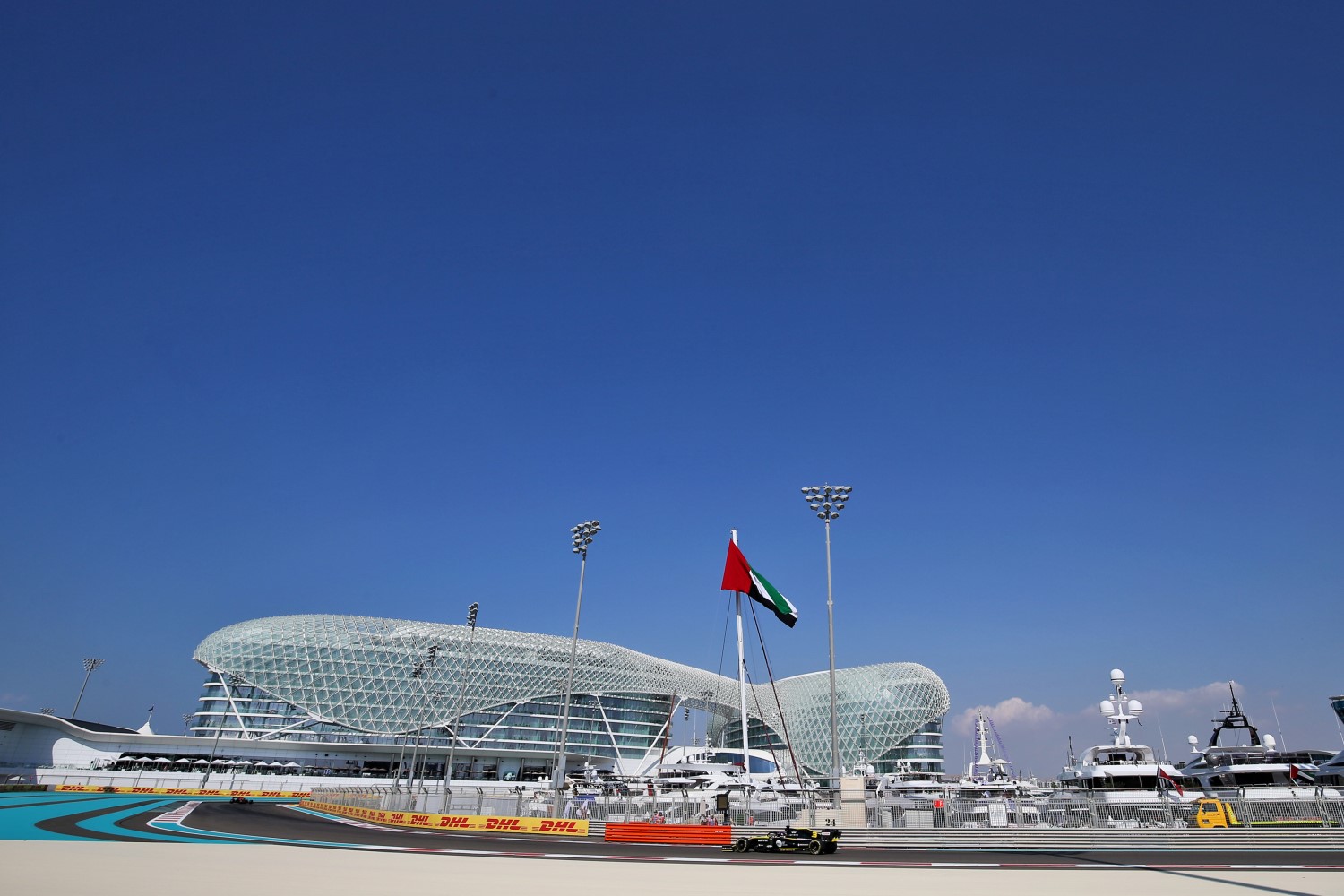Abu Dhabi F1 GP Preview
The 2020 Formula 1 season will come to a close at the Abu Dhabi Grand Prix. This weekend’s Abu Dhabi Grand Prix will mark the final chapter of a crazy 2020 season, a year that threw the sport – as well as the world – into turmoil for reasons that extend way beyond the realm of competition and entertainment.
As the world grappled with the Covid-19 pandemic, the sport, like most other businesses, ground to a halt for the best part of four months. The engines went quiet, the garages shut: Formula One forgot about cars and played its part in tackling the sanitary emergency as people did sacrifices for the common good.

The event will once more take place at twilight, with Yas Marina’s floodlights illuminating the arena once the sun goes down beyond the desert horizon. Its centerpiece is the W Hotel, whose honeycombed lattice traverses the racetrack, equipped with 5,000 lights that shimmer as the night develops.
After the second of two race weekends on the Bahrain International Circuit, with the outer configuration making its F1 debut, the teams and drivers travel to Abu Dhabi for the concluding fixture of the 2020 campaign.
The twelfth Abu Dhabi Grand Prix will be held there next weekend. The Yas Marina Circuit has seen five different winners since hosting its first F1 race in 2009. With five victories to his account, Lewis Hamilton (2011, 2014, 2016, 2018, 2019) is the most successful driver on the 5.554 km Yas Island circuit. Valtteri Bottas won the 2017 race in his debut season with the Mercedes-AMG Petronas F1 Team.
Sebastian Vettel is the second-most successful contestant in terms of race wins, with a personal tally of three. In the qualifying stakes, Lewis also leads the way with five pole positions. Mercedes-powered cars have achieved a grand total of seven wins and eight pole positions in Abu Dhabi. The lap record in the race is 1:39.283 minutes, clocked by Lewis in the 2019 season. The fastest lap ever driven on the circuit was also recorded by Lewis on his pole-setting lap (1:34.779 minutes) last year.
The big question on everyone’s mind is which car George Russell be in this weekend – the Mercedes again subbing for Lewis Hamilton, or the back of the grid Williams.
The action will commence with two practice sessions on Friday, prior to final practice and qualifying on Saturday, with Sunday’s 55-lap race set for 17:10 local time (08:10 EST/13:10 GMT).

Track Characteristics
- The Yas Marina track contains a wide variety of different corners, making it a good all-round test of cars and tires. With extensive data on this track from races and tests, the teams already have a very clear idea about the optimal set up.
- As the race starts at 5 pm in the middle of December, track temperatures will fall quite rapidly over the course of the grand prix as darkness sets in, which will therefore affect tire behavior. FP1 and FP3, by contrast, are both held in daylight.
- One year ago the top two in Abu Dhabi (Mercedes driver Lewis Hamilton and Red Bull’s Max Verstappen) completed the race with just one stop from medium to hard, while Ferrari’s Charles Leclerc added an extra stop for the soft tire to finish third. The majority of drivers stopped only once, but six stopped twice.
- There will be no support races this year in Abu Dhabi – only Formula 1 – which will affect the amount of rubber laid down over the course of the weekend and consequently the track evolution.

Fact File: Abu Dhabi Grand Prix
- The Abu Dhabi Grand Prix first appeared on the F1 calendar in 2009, marking F1’s first-ever twilight race.
- Much like in Bahrain, FP1 and FP3 in Abu Dhabi take place in the day, while FP2, qualifying and the race take place at night. Tyre behavior is different in the warmer daytime temperatures, so we need to compensate for this on set-up and in the practice run-plan.
- The Yas Marina Circuit uses around 4,700 light fixtures to illuminate the track for the twilight race and the evening sessions.
- Lewis Hamilton took pole position for the first Abu Dhabi GP in 2009 with a 1:40.948, but his 2019 pole time of 1:34.779 was over six seconds faster! And we’re expecting even quicker times in 2020…
- Overtaking becomes more difficult as the race progresses, because the softer tires – Pirelli will bring the three softest compounds to Abu Dhabi – produce a lot of marbles. This means there is a big loss of grip when running off the racing line.
- With 21 corners (12 left-handers and nine right-handers), the Yas Marina Circuit has the most of any track on the 2020 F1 schedule.
- It’s also the joint-second busiest lap when it comes to gear changes per lap, with 58 being required – behind Russia, on 62, and tied with Bahrain.
- The pit lane is the only one in F1 to feature a tunnel, with drivers passing under the circuit at the pit exit, in order for cars to re-join on the left-hand side of Turn 2. Because the drivers are fed back onto the track during a corner, it can prove tricky to see other cars.
- The slowest corner on the track is Turn 7, which is taken at around 70 km/h. However, there’s one corner that’s even slower, but it doesn’t feature on the normal lap: F1 cars take the left-hand hairpin at the pit lane exit at just 60 km/h.
- The two DRS zones are located on consecutive straights, separated by a chicane, and also have their own individual detection points. This creates some fun battles on track as the driver who’s been overtaken into Turn 8 has a chance to take the position back in the next DRS zone.
- There are seven braking events at the Yas Marina Circuit and two of those are classified as “heavy” (meaning the driver is braking for 0.4 seconds or longer, with 4G or more). It punishes the brakes, but the long straights allow them to cool, keeping temperatures at bay – unlike tracks such as Budapest where a relentless run of corners and lack of long straights make it difficult to cool the brakes.
- Only 61% of the lap time at the Yas Marina Circuit is spent at full throttle, the second-lowest percentage of any track on the 2020 F1 calendar. Only the Hungaroring, with 56%, has a lower figure.
- Because Abu Dhabi is the final race of the season and FP1 and FP3 are not fully representative, some teams often bring concept parts for the following season to run in those sessions.
- Teams will remain in Abu Dhabi after the conclusion of the season for a Young Driver Test, which takes place on the Tuesday and utilizes both race cars.

Five Things to Look Out for in Abu Dhabi
- The Abu Dhabi Grand Prix will mark a very rare outing for the C5 tire. This is the softest compound and it hasn’t been used since the Russian Grand Prix, the only other race to feature the C5 in 2020.
- After a double-header on the roughest track surface of the year in Bahrain, Abu Dhabi is a very different proposition, featuring average levels of wear.
- Looking at a track map of the Yas Marina Circuit, you’d be forgiven for looking at two very long straights and a few high-speed corners and believing it’s all about top speed. But in reality, the focus is on maximizing the lower speed corners for a fast lap.
- Despite two long straights, overtaking is a difficult prospect at the Yas Marina Circuit – compounded by the chicanes that are also very demanding on the suspension. Being able to cope with the curbs is a key consideration for the engineers.
- While most races in the 2020 calendar have taken place later than usual in the year, Abu Dhabi takes place at a more conventional time. This means the team will be accustomed to the twilight race effect this year.
